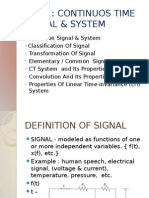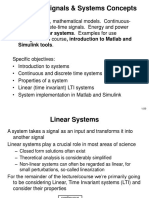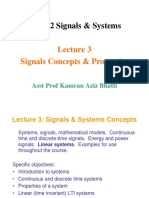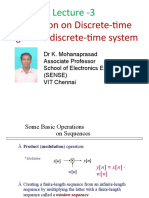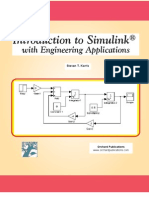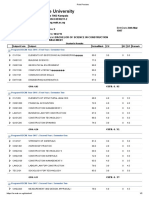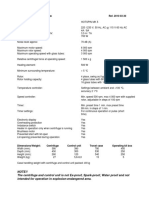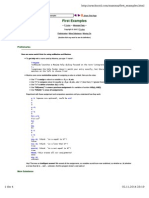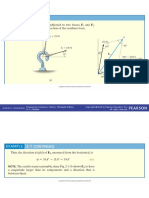0% found this document useful (0 votes)
240 views20 pagesDiscrete-Time Signal & System
1) The document introduces discrete-time signals and systems, which are functions defined at integer time steps. This allows signals to be processed by computers.
2) Discrete-time systems have advantages over continuous-time systems like improved flexibility, less sensitivity to noise, and ability to store performance data.
3) Linear, time-invariant discrete-time systems have outputs that can be computed using the convolution sum of the input signal and impulse response.
Uploaded by
ismailCopyright
© © All Rights Reserved
We take content rights seriously. If you suspect this is your content, claim it here.
Available Formats
Download as PDF, TXT or read online on Scribd
0% found this document useful (0 votes)
240 views20 pagesDiscrete-Time Signal & System
1) The document introduces discrete-time signals and systems, which are functions defined at integer time steps. This allows signals to be processed by computers.
2) Discrete-time systems have advantages over continuous-time systems like improved flexibility, less sensitivity to noise, and ability to store performance data.
3) Linear, time-invariant discrete-time systems have outputs that can be computed using the convolution sum of the input signal and impulse response.
Uploaded by
ismailCopyright
© © All Rights Reserved
We take content rights seriously. If you suspect this is your content, claim it here.
Available Formats
Download as PDF, TXT or read online on Scribd
/ 20
